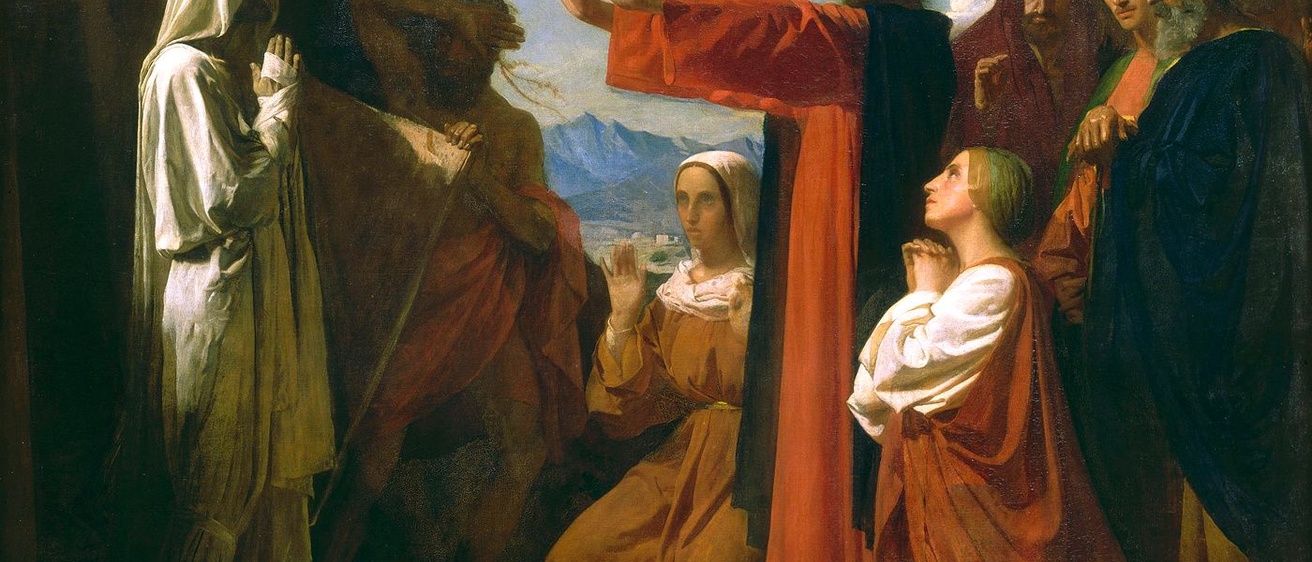How Many "Signs" Does Jesus Perform in the Gospel of John?

The answer is seven. But why does John call them "signs" and not "miracles"?
Scenes of Jesus casting out demons, healing the sick, and feeding the hungry are some of the most memorable stories we have from the gospels. Our word "miracle" comes from the Greek word for dynamis (δυναμις), which means roughly, "demonstration of power." For Matthew, Mark, and Luke, while not his complete identity, Jesus's demonstrations of power reveal his authority in the world.
However, in the Gospel of John, Jesus does not perform a single miracle. Instead, Jesus performs "signs" (σημεîον; sēmeîon). This is an odd distinction on John's part, so much so that we might ask whether this is some early local Greek variant that means basically the same thing as "miracle." The differences, however, appear to go beyond simple vocabulary. In John, Jesus will perform significantly fewer "signs" than in the synoptics, and he will never cast out demons.
While Jesus uses parables and other means to conceal his identity in the Synoptic Gospels (e.g., Mark 4:10–12), Jesus is completely open about his identity in John, while never concealing the meaning of his parables. This frank teaching helps us by highlighting a potential connection between his signs and his teachings. The chart below illustrates the connections.
|
Passage(s) |
Sign(s) |
Passage |
Teaching/Lesson |
|
John 2:1–12 |
1. Turns water to wine |
John 4:1–26 |
Jesus is the water of life. |
|
John 4:46–54, 5:1–8, 6:16–21 |
2. Healing Royal official’s son |
John 5:19–29 |
Signs reveal Jesus is the Son who can do all that the Father can. |
|
John 6:1–14 |
4. Feeding the 5,000 |
John 6:22–40 |
Jesus is the bread of life. |
|
John 9:1–12 |
6. Healing the man born blind |
John 9:1–12 |
Jesus is the light of the world. |
|
John 11:17–44 |
7. Raises Lazarus from the dead |
John 11:17–44 |
Jesus is the resurrection and the life. |
There are further clues that the signs are central to John’s message. Since he admits to editing out many signs in order to arrive at this select list (2:23, 20:30), the fact that there are seven total signs is no accident. A reference to both creation and completion, the signs progress from one to six before ending with the raising of Lazarus from the dead as the Sabbatical seventh sign. Likewise, John's placement of the resurrection of Lazarus as the seventh sign is also deliberate. In addition to using the word σημεîον (sēmeîon) to describe Jesus's specific "signs," John alone among the gospels uses the verbal cognate σημαίνω (sēmaínō), meaning "to indicate, signify," and does so on three specific occasions—John 12:33; 18:32; and 21:19—and in each instance, the text reads (almost identically), "He said this to indicate (σημαίνων) the kind of death he was to die." Thus, John clearly sees the word σημεîον (sēmeîon, or "sign") and the verb σημαίνω (sēmaínō, or "to signify") as references to more than mere magic tricks. He sees them as pointing toward something specific: Jesus's own death and resurrection. This is likely why John set the most powerful of his "signs"—the resurrection of Lazarus—as the final sign.
So, why does John use "signs" instead of "miracles"? The ending of at least one version of the gospel explains: "But these are written so that you may come to believe that Jesus is the Messiah, the Son of God, and that through believing you may have life in his name" (John 20:31). In our lives, signs grab our attention and help us find where we want to go. For John, Jesus is the only way to reach God (John 14:6), so he provides signs just as the Romans would set out mile markers along the road. In the same way that "all roads lead to Rome," for John, all signs point to the resurrection of Jesus, so that those who believe can follow his path to their desired destination.
(Originally published: April 19, 2022)
